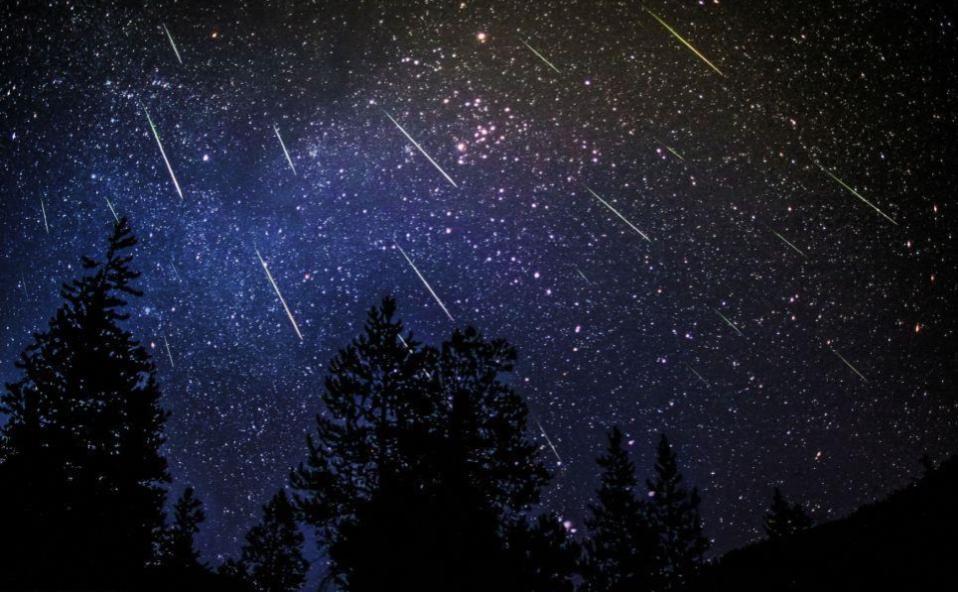The night of August 12/13 brings us the peak of one of the best Meteor Showers of the year; the annual PERSEIDS. Meteor activity will begin between 10 and 11 pm on August 12th, but the best time to look will be from midnight to 4 am on the 13th.
Though meteors may be seen any night of the year sky-watchers go out to observe, our chances of seeing them increase during meteor showers. Meteor showers exist because periodic comets drop debris that stays behind as their orbits bring them close to the Sun. In the case of the Perseids, it is Comet Swift Tuttle; and when Earth’s orbit takes it through this debris field, we see more meteors than normal.
Perseid meteors all come from the region of the sky (northeast) where the constellation PERSEUS if found (hence the name). This spot is called the radiant. Perseids average one meteor per minute, though we never know exactly when one will appear. So get comfortable —– in a lawn chair perhaps —- and slowly scan the northeast sky. Perseids are fact moving; 37 miles per second; they last for one to three seconds; and some get as bright as the North Star (Polaris). The meteor material are as small as grains of sand or tiny pebbles, and are vaporized in Earth’s atmosphere while still 45 to 60 miles above the ground. The Perseids are a summer, sky-watching treat, so turn out for it, and bring the family.
Meanwhile both Saturn and Jupiter reach opposition this month. This means they are opposite the Sun in the sky as seen from Earth. Saturn is first; rising in the East as the Sun sets in the West on August 2nd. Up 15 degrees in the east by 10 pm, Saturn will be 30 degrees up at 10 pm by August 31st. Easy to spot among the dim stars of zodiac Capricornus, its beautiful ring system pops out to see even in small telescopes.
Brighter Jupiter reaches opposition on August 19th, and it is very bright, left of Saturn, and also in Capricornus. Look for Jupiter just above the Full Moon on August 21st. Jupiter is a wonderful object with a wealth of surface features from its colored cloud bands to be seen in telescopes. Binoculars will reveal Jupiter’s 4 largest Moons as tiny jewels arranged around it. Look on successive nights to see how these Moons re-arrange themselves as they orbit the giant planet.
Jupiter and Saturn will remain in view for us for the rest of the summer and into the fall and early winter.
The western evening sky will be dominated by Venus. Brilliant Venus, even brighter than Jupiter, will be easily seen just after sunset and as twilight deepens just over the western horizon. The 3 day old crescent Moon will be nearby on the night of August 10th.
It will be a full month for Sky-watchers!


